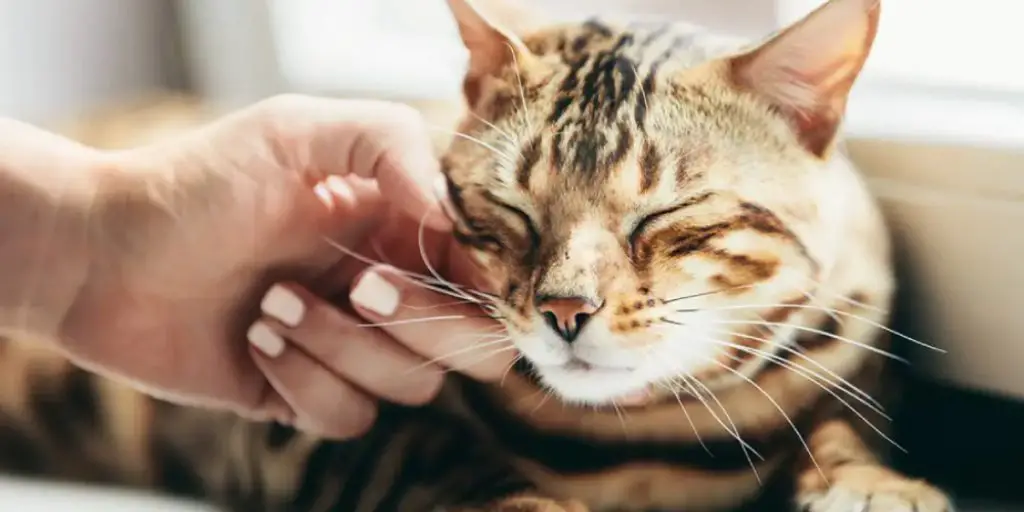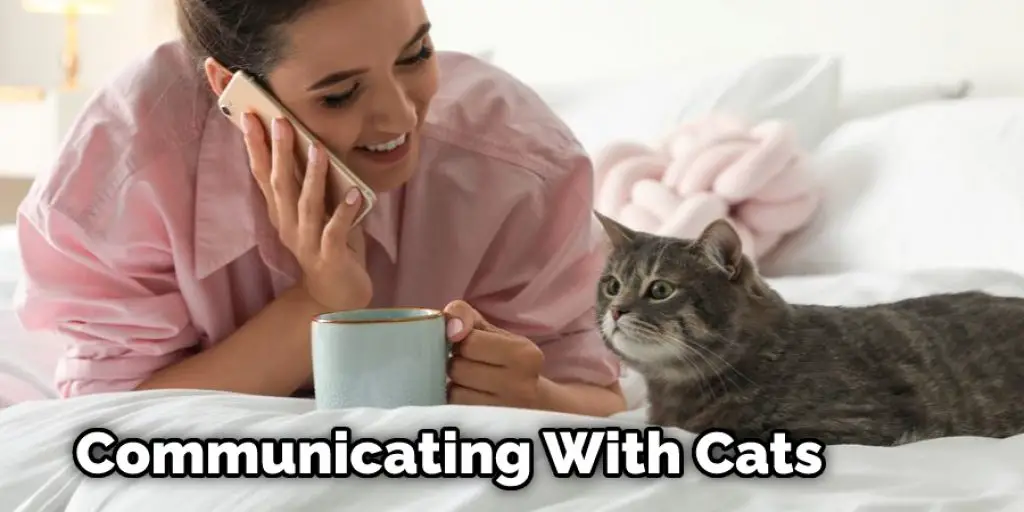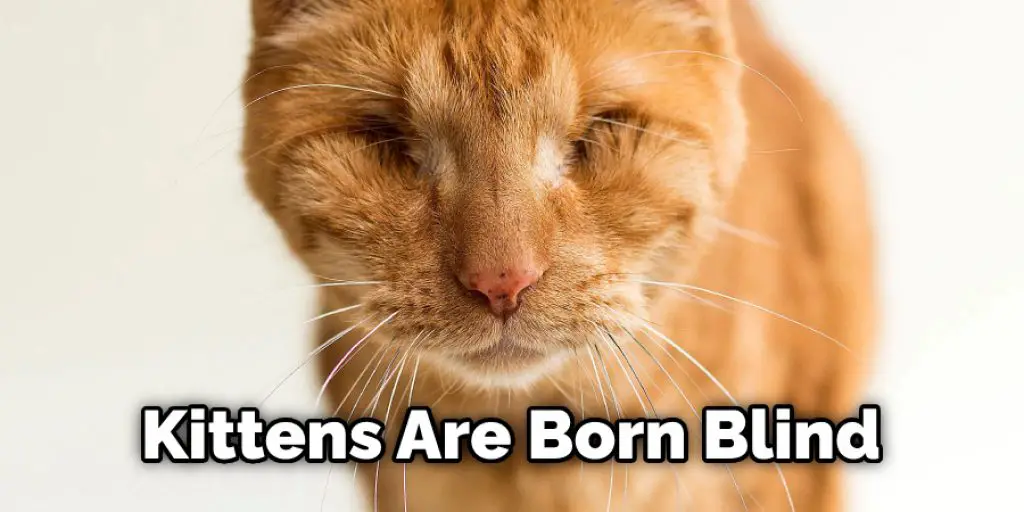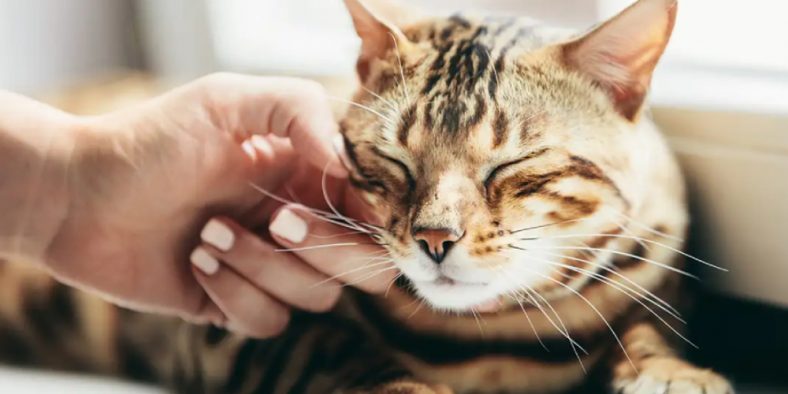Have you ever wanted to purr like a cat? Well, now you can! Purring is a way for cats to communicate with other felines, and it’s also thought to be therapeutic.
You can mimic a cat’s purring noise by making a sound in your throat. It may take some practice, but once you get the hang of it, you’ll be able to soothe yourself and others with the healing power of kitty purrs.

If you’ve ever wanted to know how to purr like a cat with your throat, now is your chance. While cats purr for various reasons, you can mimic their sound by using your throat. By following these simple steps, you’ll be able to make your very own kitty purr in no time. Keep reading for more information on how to do this and the benefits.
Contents
Five Reasons Why Do Cats Purr
Reason 1 : Cats Purr Because They’re Content

Some experts believe that when cats purr, they are actually communicating with humans. Purring is a cat’s way of telling you that everything is okay and they feel safe. So, if your cat is purring, it’s a good sign that they’re happy and content.
Reason 2 : Cats Purr Because They Hurt
One reason why cats purr is that they are in pain. Cats can purr at any time of the day, whether hungry, tired, happy, or hurt.
Reason 3 : Cats Purr During Kittenhood

Kittens learn to purr when nursing from their mom and littermates as a way to call for help if they feel threatened or are in pain. It’s thought that purring is also a way for kittens to stay close to their mother since they’re born blind and deaf.
Reason 4 : Cats Purr to Calm Themselves
Cats also purr when feeling relaxed or even when they have a health issue, such as during recovery from injury.
Reason 5 : Purring Helps With Healing
Some veterinarians believe that purring has healing properties and can help speed up the recovery process. The low-pitched vibrations of a cat’s purr are thought to relieve pain, soothe muscles and nerves, and even stimulate bone growth.
If you want to know how to purr like a cat with your throat, consider following the steps mentioned below!
How Do Cats Purr?
Cats have a unique way of purring that has puzzled scientists for many years. It’s not unique to them but also quite baffling. The purr is often associated with contentment, but it can also happen when the cat is distressed or even while giving birth. This has fascinated researchers, but until recently, there wasn’t much research done on the subject.
The sound of a cat purring is created by the vibration of their vocal folds located in the voice box. This is what enables them to make noise when they purr. The sound that comes from this unique process is then modified by the size and shape of the cat’s oral cavity. In other words, all cats have a similar mechanism for making the purring sound, but each one creates a unique purr based on the size and shape of their bodies.
10 Steps to Follow : How to Purr Like a Cat With Your Throat
Step 1 :
Relax your throat muscles and open your mouth slightly. Breathe deeply.

Step 2 :
Draw in a breath and begin to hum. The sound should be similar to the noise you make when trying to imitate a cat’s meow. Keep the tone soft and low-pitched for this step.
Step 3 :
If you want to make a sound like a cat’s purr, you need to increase your vibration as you exhale. This means that you should make your sound higher. You can do this by keeping your throat relaxed. You can also try shortening the length of your exhale so that the sounds are broken up by a brief pause between each one.
Step 4 :
Continue making your low-pitched hums and add in some inhalations through your nose, but continue to exhale continuously with your hums. Think of this portion as the cat’s purring with breaths rather than a typical exhale-inhale pattern. Step 3: Start Your Exhales
Step 5 :
Continue making your hums without adding more breath sounds when you run out of air from your inhale. This step is essential because cats do not typically take extra breaths while they’re purring, so you’ll want to practice that as well.
Step 6 :
Begin adding in a high-pitched meow sound at the end of your exhale as you come to the end of your air supply. The meow should be quick and sharp. Think of it as an imitation of a cat’s “chirping” or “trilling” noise rather than the long meow sound it often makes while speaking to humans.
Step 7 :
Continue alternating between long hums and sharp meows. Maintain your humming while you exhale without pausing. Try to imitate the natural consistency of a cat’s purr by maintaining a steady rhythm that doesn’t vary too much.
Step 8 :
As you exhale, gradually reduce the volume of your hums until the sounds become softer and quieter. Keep this up for several breaths. Cats often purr at a low volume, but for humans, it’s helpful to practice purring quietly at first until you’ve perfected the technique.
Step 9 :
Practice purring at a lower pitch. Cats often purr at a much lower frequency than you would produce if you tried to imitate them vocally, so you should practice adapting your purr to this frequency as well. Try lowering the volume, too.
Step 10 :
Practice alternating between long exhales and short meows until you feel comfortable transitioning quickly between the sounds. Cats can switch between their meow and purring sounds quickly, so you should also practice this aspect of feline vocalization.
You can check it to Get a Semi Feral Cat in a Carrier
Do Cats Only Purr When Happy?
Most people think that cats only purr when they are happy or content, but this is not true. A cat can also purr when it’s hungry or sick. Researchers have found that cats have different purrs for different situations, just like they have different meows.
For example, the purr emitted when a cat is happy can be distinguished from the one it will make when it’s sick or hungry. This might be the reason why kittens can find their mother even while she’s far away. She can signal them by purring. Researchers also believe that cats may have a way of identifying themselves through their purr, just as humans have different accents.
Can Humans Purr Like A Cat?
A cat’s purr is a soothing sound that people often imitate to calm an upset or crying baby. There’s no doubt about it, and cats purr because they are happy. But is it only happy cats that purr? Cats use their purr for many purposes, including communicating with other cats and humans. Cats start to purr at birth. Kittens can’t even meow yet when they first begin to purr!

A cat purrs by contracting its laryngeal muscles. The sound is created when air passes through the narrowed opening between the vocal cords. Cats normally purr around 26 cycles per second but can go all the way up to 150 cycles per second. Humans only hear sounds over 20 cycles per second, so there’s no way to hear a cat’s purr.
Some people think that purring is similar to whistling and uses the same muscles for whistling. So, if humans could purr as a cat does, we would need to tighten our vocal cords, move them apart slightly and then contract a tiny muscle at the base of the tongue. This would create a sound that we couldn’t hear, but it would be close to a cat’s purr.
What Does Human Purring Sound Like?
A low-toned purring noise usually characterizes human purring. This is often done with the diaphragm and throat, where vibration can be felt or heard. Many times, this involves some degree of constriction in the throat. Some people think constriction in their chest cavity, while others do not.
While it may be possible for humans to purr with their throat without constriction, this is not the most common way to produce human purring. Instead, this will be a more typical human purr if you experience constriction in your throat, similar to a cat purring.
Conclusion
You may be wondering how you can purr like a cat with your throat. Purring is an instinctual sound that cats make when they are content, happy, or relaxed. Some people believe that it helps them heal quicker after injuries or surgery because of its soothing effect on their blood pressure. You might not know this, but there’s also evidence that suggests that purring has healing benefits for humans too!
For example, studies show that babies exposed to audible sounds of cats (purrs) experienced improved growth rates while recovering from bronchitis-induced respiratory distress syndrome than those infants who weren’t exposed to these sounds.
We hope this blog post on how to purr like a cat with your throat has been helpful. If you have any questions or want to know more, then feel free to comment below!
You may read it also – How to Treat a Bird Attacked by a Cat


